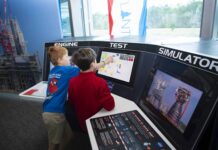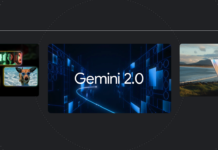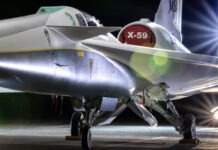NASA Astronaut Don Pettit and Crewmates Arrive at the International Space Station
Introduction
In a significant milestone for space exploration, NASA astronaut Don Pettit, along with Roscosmos cosmonauts Alexey Ovchinin and Ivan Vagner, successfully arrived at the International Space Station (ISS) on Wednesday. This arrival brings the total number of residents on the ISS to 12 for a 13-day handover period, marking an important phase in the ongoing operations and scientific research aboard the orbital outpost.
The Journey to the ISS
The trio’s journey to the ISS was facilitated by the Roscosmos Soyuz MS-26 spacecraft, which launched from the Baikonur Cosmodrome in Kazakhstan. The launch occurred at 12:23 p.m. EDT (9:23 p.m. local time in Baikonur), and the spacecraft completed its journey in just two orbits, docking automatically with the Rassvet module of the ISS at 3:32 p.m. EDT. This journey, lasting approximately three hours, exemplifies the efficiency and precision of modern space travel.
Coverage and Streaming of the Hatch Opening
NASA provided extensive coverage of the hatch opening, which was streamed live at 5:30 p.m. EDT on several platforms, including NASA+, the NASA app, YouTube, and the NASA website. The hatch opening, scheduled for 5:50 p.m. EDT, allowed viewers worldwide to witness this significant event in real-time. For those interested in streaming NASA content, it’s available on a variety of platforms, including social media, making it accessible to a broad audience.
Joining the Expedition 71 Crew
Upon their arrival, Pettit, Ovchinin, and Vagner joined the existing Expedition 71 crew members. This includes NASA astronauts Tracy C. Dyson, Mike Barratt, Matthew Dominick, Jeanette Epps, Butch Wilmore, and Suni Williams, along with Roscosmos cosmonauts Nikolai Chub, Alexander Grebenkin, and Oleg Kononenko. The presence of these new members enhances the collaborative efforts on the ISS, fostering international cooperation and advancing scientific research.
Transition to Expedition 72
Expedition 72 is set to begin on Monday, Sept. 23, with the departure of Tracy C. Dyson, Nikolai Chub, and the outgoing station commander, Oleg Kononenko. This shift will mark the end of a six-month mission for Dyson and a year-long expedition for Chub and Kononenko. The transition between expeditions is a critical period that ensures continuity of operations and scientific experiments aboard the ISS.
Duration of Stay and Mission Objectives
Pettit, Ovchinin, and Vagner will spend approximately six months aboard the ISS as part of Expedition 71/72. During their stay, they will focus on advancing scientific research, conducting experiments in various fields such as biology, physics, and earth science. This mission represents Pettit and Ovchinin’s fourth spaceflight and Vagner’s second, underscoring their extensive experience and expertise in space missions.
Upcoming Crews and Future Missions
During Expedition 72, the ISS will welcome two new crews. NASA’s SpaceX Crew-9 is scheduled to launch in September, followed by Crew-10 in February 2025. These missions are part of NASA’s ongoing collaboration with SpaceX, leveraging commercial spaceflight capabilities to maintain and enhance operations aboard the ISS.
Staying Informed and Engaged
For those interested in following Don Pettit’s mission, updates are regularly posted on his X (formerly known as Twitter) account. Additionally, the latest news about the ISS crew can be found on Instagram, Facebook, and X. These platforms provide real-time updates and insights, keeping the public engaged and informed about the latest developments in space exploration.
Conclusion
The successful arrival of NASA astronaut Don Pettit and his crewmates at the ISS marks a significant achievement in space exploration. Their mission will not only contribute to our understanding of space but also pave the way for future missions and collaborations. As we continue to push the boundaries of what is possible, the importance of international cooperation and scientific research remains paramount.
Additional Information: The Importance of the ISS
The International Space Station is a symbol of international cooperation, involving space agencies from the United States (NASA), Russia (Roscosmos), Japan (JAXA), Europe (ESA), and Canada (CSA). It serves as a microgravity laboratory where scientific research is conducted in an environment that cannot be replicated on Earth. The ISS has been continuously occupied since November 2000, making it one of humanity’s longest-running space missions. Research conducted on the ISS has led to advancements in various fields, including medicine, environmental science, and materials science.
Technical Jargon Explained
- Docking: This is the process by which a spacecraft connects to another spacecraft or space station. In this context, the Soyuz MS-26 spacecraft docked with the ISS.
- Hatch Opening: This refers to the moment when the hatch (door) of the spacecraft is opened, allowing astronauts to enter the ISS.
- Orbital Outpost: Another term for the space station, emphasizing its role as a platform for scientific research and observation in Earth’s orbit.
- Microgravity: A condition in which objects appear to be weightless and experience very little gravitational force, as found in the ISS.
Good to Know: The Role of Soyuz Spacecraft
The Soyuz spacecraft has been a workhorse for space missions since its inception. Developed by the Soviet Union and now operated by Russia, Soyuz is renowned for its reliability and has been a critical component of human spaceflight. It serves as both a transport vehicle for crew and cargo and a lifeboat for the ISS, ensuring the safety of astronauts in case of an emergency.
Reactions and Reviews
The arrival of Pettit and his crewmates has been met with enthusiasm and excitement within the space community. NASA and Roscosmos officials have praised the successful mission, highlighting the importance of international collaboration in achieving such milestones. Space enthusiasts and the general public have also expressed their fascination and support, eagerly following the updates and developments from the ISS.
Contact Information
For further information or media inquiries, you can reach out to the following NASA representatives:
- Joshua Finch / Claire O’Shea
Headquarters, Washington
Phone: 202-358-1100
Emails: joshua.a.finch@nasa.gov / claire.a.o’shea@nasa.gov - Leah Cheshier
Johnson Space Center, Houston
Phone: 281-483-5111
Email: leah.d.cheshier@nasa.govFor more detailed information about the International Space Station, its missions, and ongoing research, visit the official NASA ISS website at https://www.nasa.gov/station.
Conclusion
The arrival of Don Pettit and his crewmates at the ISS is a testament to the enduring spirit of exploration and scientific inquiry. As they embark on their six-month mission, they will contribute valuable knowledge and insights that will benefit humanity. Stay tuned for more updates and discoveries from the International Space Station, as we continue to explore and understand the vast expanse of space.
For more Information, Refer to this article.


































